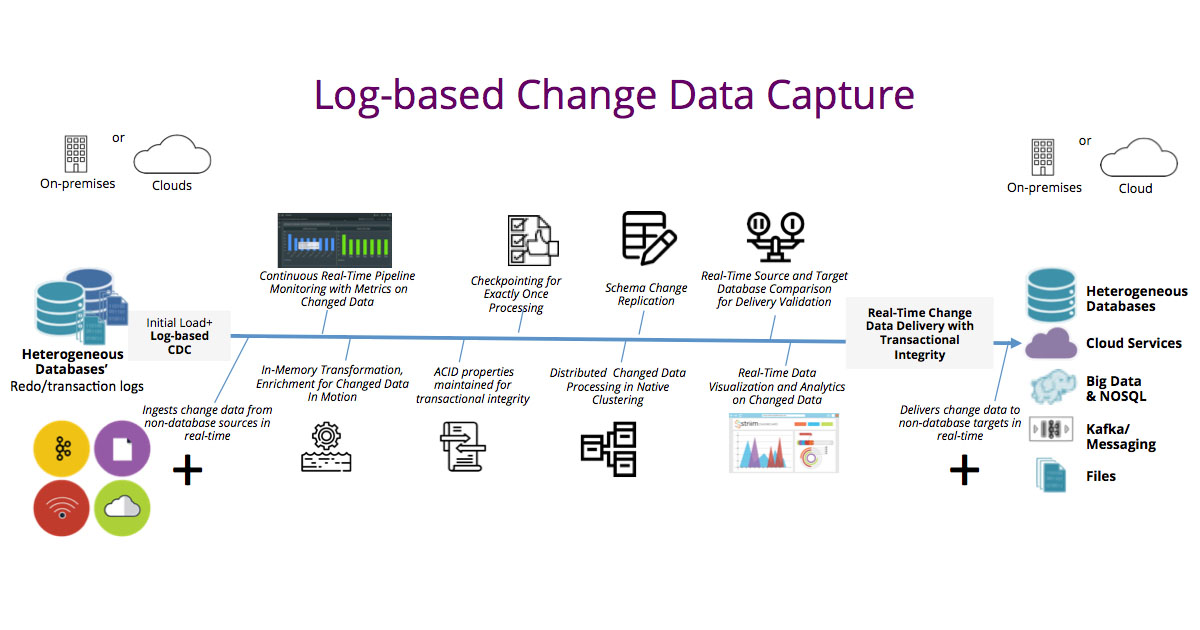Different Methods of Change Data Capture
If you spend a lot of time working with databases, then change data capture (CDC) is a powerful tool to help you track changes made within them. CDC exists solely to keep track of what changes in a database.
With this information readily available, you can quickly make decisions based on the most recent data. Using CDC will allow you to empower your business with real-time insights.
Rather than working with potentially outdated data, you can use what’s most relevant. This will prevent you from needing to search for any changes before taking action manually.
While CDC serves one primary purpose, there are several ways of implementing this in your business. It would help if you understood how different CDC methods work to see what will work best for you.
We’ll cover the different techniques of the CDC below to help you make an informed decision.
What Is Change Data Capture?
First, you should clearly understand what change data capture (CDC) is and what it does. CDC uses software patterns to detect changes in a database. This means that any change made to the database will show up for you to use regardless of who did it.
Data precision is critical because many expensive decisions are made with this information. Having outdated or irrelevant data might cause you to do something ineffective for your business.
Using the CDC, you can always be sure that the most recent changes are illustrated. This will save you time, money, and any effort wasted sorting through the database. Another important use for CDC is updating your data warehouse. Your data warehouse needs to be refreshed frequently, which requires new information to be added.
The most effective way of doing this is only to add changed data to the data warehouse. Using the CDC, you can populate and export your changed data to simplify this process.
There are several reasons why you might want CDC for your business, but the underlying theme is to make data management more efficient.
Who Does It Work For?
Now, you’ll likely want to know who CDC is good for. CDC works great for any business using databases and ETL applications. Databases store relevant information while ETL applications are used to export this to the data warehouse.
While ETL applications can be useful, they aren’t reliable because they mimic your database’s information. A much better solution here is to use CDC to identify specific changes and upload this information to your data warehouse.
Furthermore, any businesses that prioritize business intelligence will find great value from CDC. This allows you to use real-time analytics that shapes the best solutions possible. Finally, a business that is looking to grow should also use CDC. It would help if you found ways to create more efficient processes so that you can seamlessly scale.
CDC will streamline your data interpretation and free up time for more demanding work.
Log-Based
Log-based CDC is the first method that we’ll cover. This technique takes advantage of a transaction log. Most databases store every transaction within a log so that recovery is simple if a crash occurs.
With log-based CDC, changes are read directly from the transaction log. While this method can be effective, several challenges stand in the way. Interpretation of the transaction log might be difficult because the database designer stores change to the database.
Each database vendor will store them differently, and this makes it difficult to understand them. Furthermore, changes in the transaction log might not be viewable. If there isn’t an interface to the transaction log, CDC cannot be performed.
Finally, the signs used to denote changes in a transaction log might not be viable for the CDC. This means that you can see that changes have been made but can’t see what they are.
Timestamps
The second style of CDC uses timestamps or modified dates. Many databases have columns to indicate when a row has been modified. Timestamp CDC looks at this and only pulls information from the most-recently modified columns.
While this method can be useful, it requires your database to have date-modified columns and ensure that they’re properly working. Some databases do not have this column, and this will render the timestamp CDC useless.
If your business uses ETL applications, then timestamp CDC is a great alternative. This style of CDC is practical as long as you have timestamps or modification date columns.
Differences
Another method of CDC involves comparing differences. With the difference CDC, current data is directly compared to older data to identify differences. This is extremely effective and perfectly illustrates what has changed.
The main drawback of this technique is that it requires an insane amount of resources. If you have a particularly large database, then the time it takes to interpret changes might be inefficient. As your database grows, so too will your CDC processing time. This means that difference CDC is most effective for smaller businesses and diminishes in effectiveness as you grow.
It can reach a point where real-time changes are not possible due to how long CDC takes. With low data volume, the CDC’s difference works great, which might be a good choice for you.
Triggers
Finally, you can also use the CDC by implementing triggers. This method will allow you to create triggers that record a change once activated. You can use these triggered events to populate a changelog.
Generally speaking, identifying changes with trigger CDC is fairly straightforward. However, recording the changes to a changelog is resource extensive. Furthermore, this will place a great strain on your primary database because triggers must be defined for each table. Once trigger CDC is set up, it works quite well, but initializing it is a major endeavor.
Again, trigger CDC works best for businesses with smaller volumes. This limits the extent of the strain placed on your database and simplifies the recording of the changes.
Closing Thoughts
Businesses working directly with databases will need a way to keep tabs on changes. This is relevant for business intelligence and analysis to make good decisions. CDC is a technique used to keep track of changes and record them in a digestible manner. This is hugely beneficial to you because it eliminates the need to sort through a database manually.
There are four main methods of CDC, and each has its unique advantages and disadvantages. This includes the CDC using a log-based approach, timestamps, differences, and triggers. To understand which method will work best for you, the best solution is to evaluate your database needs and communicate with CDC vendors to see who can best help you.
CDC can save you time and money, but the ineffective CDC is simply a waste of time.






















